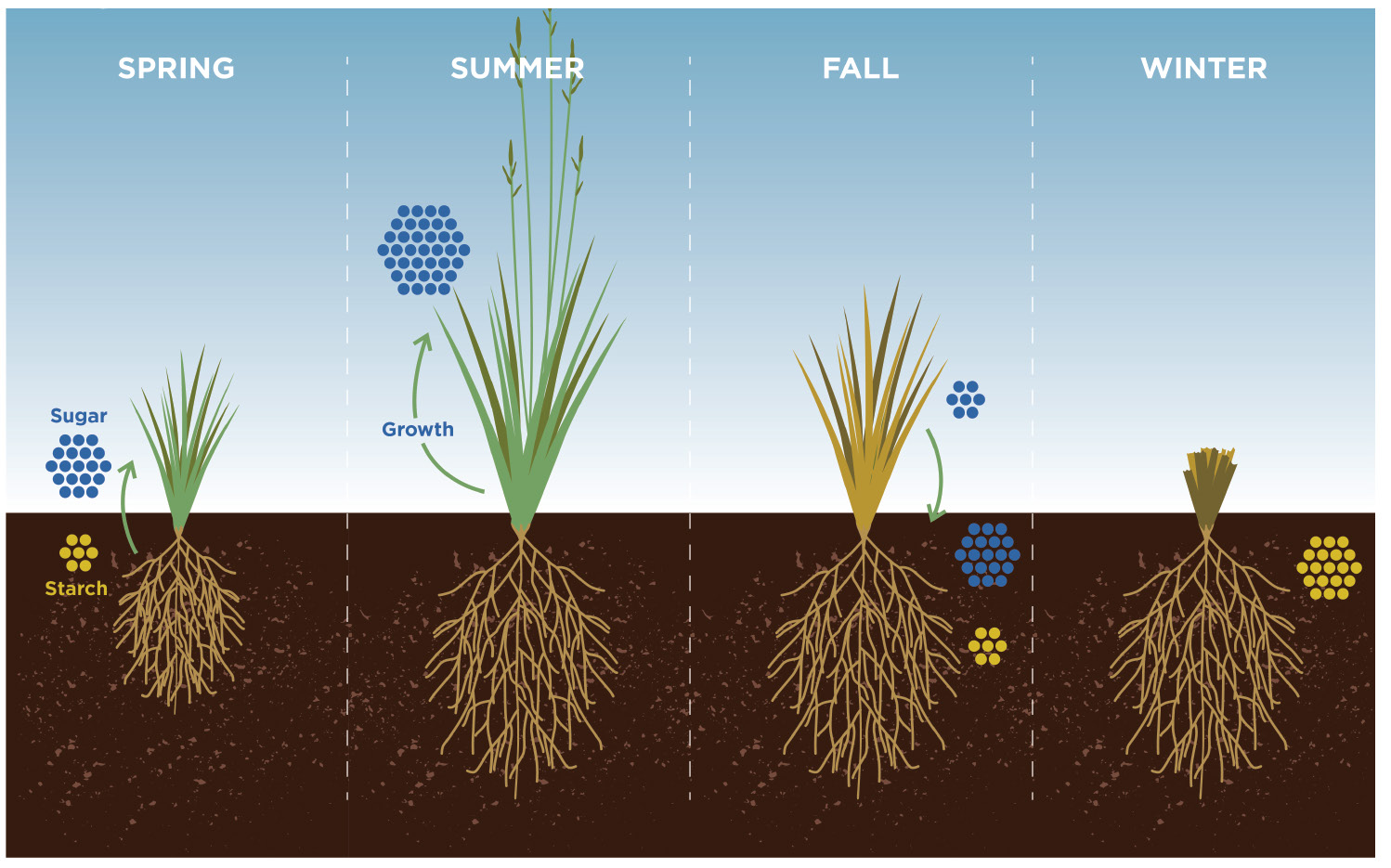
One way to think about plants is as sugar factories. But they are a funny type of factory where the product they make is also used to make the factory larger. Sugar is produced in the leaves using sunlight in the process of photosynthesis. Plants make lots of complicated decisions about whether to invest this sugar into further leaf growth, the creation of defensive compounds, root growth, seed production, and/or storage. This latter option is important in perennial species where the same plant lives across multiple seasons. These are life-or-death decisions for the plant because only the most successful will survive and fill the world with their offspring.
In native grasslands or introduced pastures, you may find several warm-season perennial species, such as big bluestem, indiangrass, switchgrass, bermudagrass, and others. Perennial species have difficult decisions to make throughout the year regarding how to utilize their precious sugar. These decisions are largely driven by the inability of the aboveground leaves to be able to survive freezing temperatures in winter.
Sugar to starch
Sugar is accumulated in the shoots during summer and, in the fall, is translocated to the root system where it is largely converted to starch for long-term storage and winter survival. One perennial grass is well-known for its ability to accumulate sugar — it’s called sugar cane. This major agricultural crop is an example of humans interfering with the complex yearly sugar cycle of perennial plants to make an essential economic product.
Research indicates that in some perennial grasses, 5% of the sugar produced may eventually be translocated to the belowground organs, including stolons, rhizomes, or roots, depending on the species. The sugar is converted to starch, which can pack more energy into a smaller area; we are familiar with this concept in our own diet if we eat potatoes. This starch may represent up to 10% of belowground dry weight in early winter, which, in Oklahoma grasslands, may be equivalent to approximately 300 pounds of starch per acre. The starch yield of potatoes can be more than 5,000 pounds per acre.
A good starch reserve is essential for early growth in spring to produce new leaves and roots, largely replacing the role of seed reserves. Once enough leaves and roots are produced, the plant sustains growth by active root uptake of soil resources, such as water and nutrients. It uses its leaves for photosynthesis, leading to a new cycle of sugar accumulation and eventual translocation to belowground organs for winter storage.
Growth provides sugars
Grazing is a natural part of perennial grasslands. Counterintuitively, some level of grazing is needed to maximize plant growth by forcing the plant’s “reach” in order to regain lost leaf tissue. However, overgrazing in spring or early summer will reduce a plant’s ability to grow enough leaves to satisfy plant growth and sugar accumulation.
Overgrazing in late summer and fall will rob sugar from the translocation process so that it never makes it to the roots and is never converted to starch; therefore, it is not available for spring growth. Without this reserve starch, stands will suffer and lose ground cover as they fail to successfully overwinter and green up in the spring.
Producers need to think carefully about managing their plant’s sugar factories for storing sufficient starch belowground for next year’s growth. This is accomplished by implementing intentional grazing strategies, such as rotational grazing. Using a rotational grazing strategy that allows for variation in timing and intensity of grazing events ensures these perennial grasses will regularly go through healthy spring green up and fall starch-accumulation cycles.
This article appeared in the February 2021 issue of Hay & Forage Grower on page 22.
Not a subscriber? Click to get the print magazine.

